Food lies at the heart of our bodies and our culture; it is there for celebrations and sustenance. NOMaste features a local fierce foodie each month, in four weekly segments. First, an interview, then a top 10 list, followed by a recipe to share, and finally a food review. This food corner will not just feature local chefs but also restaurateurs, buyers, suppliers — any woman involved in any aspect of the food chain, from farm to food truck. Join us each week as we get to know another Foodie in the city. Part I of this month’s series can be found here, and part II can be found here.
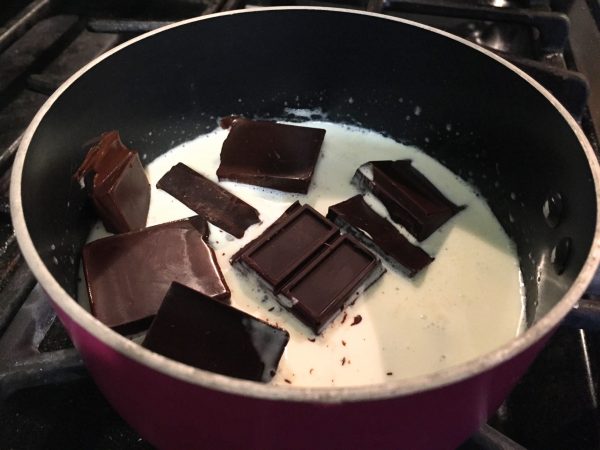
Michelle gave me the Mac Daddy of all macaron recipes by giving me an incredibly advanced recipe from the Macaron Master himself — master pastry chef Pierre Herme — from one of her own treasured cookbooks.
I must say, this was the first time doing this series that I have felt defeated. I have made macarons only once before — hazelnut flavored — and they came out pretty darn good. Not 100% perfect, but maybe 90% perfect. I think it might have been a Martha Stewart recipe, but I can’t honestly remember. This experience was quite the opposite.
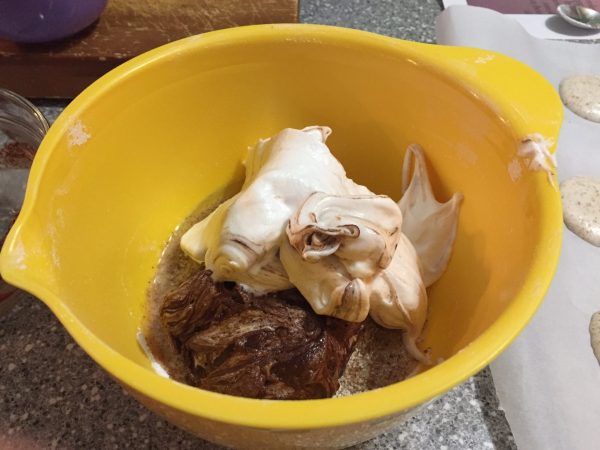
The recipe seemed needlessly complicated with extra-fancy ingredients that should have been substituted for something I could actually find locally and not special ordered — so I did. I could not find the special Valrhona chocolate or smoked-salt butter, so I searched for a substitute for the chocolate. Not finding any particularly good or helpful information on the internet (you failed me, Google!) I decided to just use some baking chocolate with a touch of butter to make it a little creamy. I have no idea if this is correct or not — but since I had the same exact problems with the plain macarons as I did the chocolate ones, I can only assume this substitute was not to blame for the failure that were my cookies.
I also opted to forgo the smoked-butter since I didn’t have it and also don’t particularly like smoky flavors, and just left out the salt entirely in order to opt for a more chocolate rich experience. This might be tacky and awful to the gourmands of the world, but I was short on time and had a long day of baking ahead of me, so these were the only two shortcuts I took.
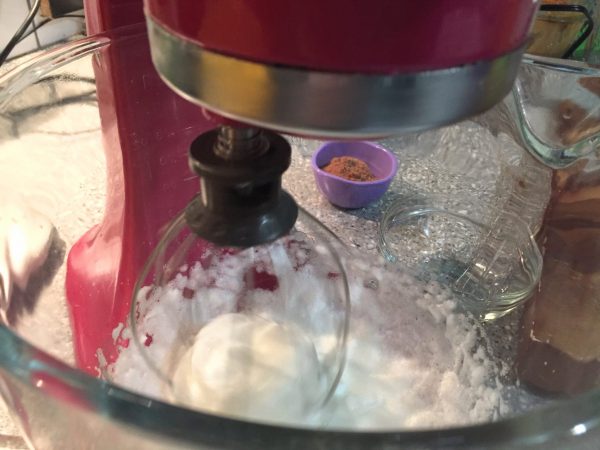
With the methodology, I did not take ANY other shortcuts — and believe me, I wish I did. I even sifted the ground almonds (which I made from scratch in my coffee grinder, after a very thorough cleaning with soap and baking soda) and flour — a step I NEVER take (I believe sifting is generally a waste of time). I really did everything to the letter as best as I could. I just am not Pierre Herme. He must be made of magic — magic I am missing.
I did not want to make 72 macarons, so I cut the recipe in half. Since this gave me such shockingly small amounts of the liquid ingredients to work with, like 1 tbsp. of water in the small saucepan with the sugar, and 3 egg whites only, it was a little difficult to physically work with such small amounts of ingredients.
The first big issue was temperature control. The sugar and water needed to be heated to a very specific degree, while also whipping egg whites. You had to monitor things until the mixture cooled to a specific temperature before adding it to the whipped egg whites. It is impossible to use a candy thermometer with a stand mixer while whipping egg whites at full speed. Unless I had a laser thermometer (I’m really sad I never invested the 15 bucks for one now) there was no way to keep up with the whipping while also keeping track of the temperature. This resulted in the mixture cooling prematurely, because the pan was so small, and some sugar crystals forming before I could get all of it into the bowl with the whisking eggs. I knew that was a bad sign, but I just powered through.
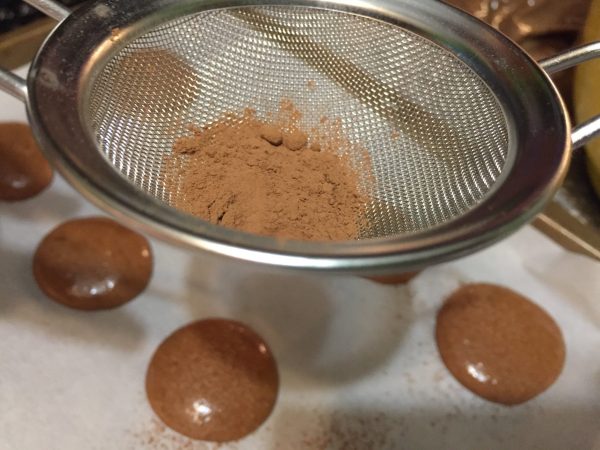
The most misunderstood step to me was the part where you put some of the ‘liquified’ egg whites — which let me tell you, was a Google trip down a rabbit hole in and of itself — into the flour-almond mixture but you do NOT stir it. You wait till you have the whipped egg whites, then you fold it all in together (what?!). That’s right — you fold fluffy, beaten egg whites that are nice little peaks, with some runny-ass raw egg whites, into a pretty large amount of flour/almond meal. You do this until it ‘loses all volume.’ I was completely befuddled. I am fairly certain last time I (successfully) made macarons (OK, the only time — but it was a success!) I just whipped up all the egg whites, and then folded it into the dry ingredients.
The plain macarons were so bad, they couldn’t even be used. The insides were gooey, they deflated as soon as they came out of the oven into thin, little pancakes. The edges and coating were cooked – the inside was an undercooked mess. I couldn’t even slide them off the parchment paper — rendering my parchment unrecyclable. (I always save and reuse my parchment).

I let them dry, thinking maybe they could be saved but they had to be thrown out. I ate a few anyway, the edges mostly — the flavor was good, but the consistency and look of them was atrocious. I mostly blame the sugar-water that had to be cooled before adding it to the egg whites, and not mixing the batter enough. For the chocolate, I just heated the sugar and water to the correct temperature, then poured the liquid right into the eggs, no waiting for the temperature to lower. I didn’t want it to crystalize again.
The chocolate ones came out slightly better — mostly because the batter was mixed more, so there were no surprise little pockets of raw egg white that didn’t incorporate into the mixture. These also came out flat — lost all their puffiness (not that they had much to begin with) but at least these were able to be removed from the parchment and saved to make some macarons.
By this point in the day (and it took all day) it was time to make the ganache. I did as instructed except for the immersion blender — I was fed up and couldn’t pull out another piece of equipment, or add another dish to the overflowing sink. I was tired, my feet hurt, my back hurt (did I mention I am six months’ pregnant and this took almost 8 hours?). I tasted the ganache — it was SO bitter, I couldn’t take it. I added a bunch of sugar until it was almost sweet enough to eat, but not quite (maybe a few tablespoons). I put it in the fridge, and the chilling must have released more sugars, because it did taste sweeter after it was cooled for a few hours.
Next it was time to assemble the macarons. I took my sad little spheres, and tried as best as I could to match up mixed sized cookies, into little sandwiches. They chilled overnight, and I waited, wondering how they would taste. By the next morning, the chilled cookies actually tasted good! They were by no means macarons, but they were edible, and sweet. Looking at them, they have more in common with Milanos that Macarons, but they still pass as cookies.
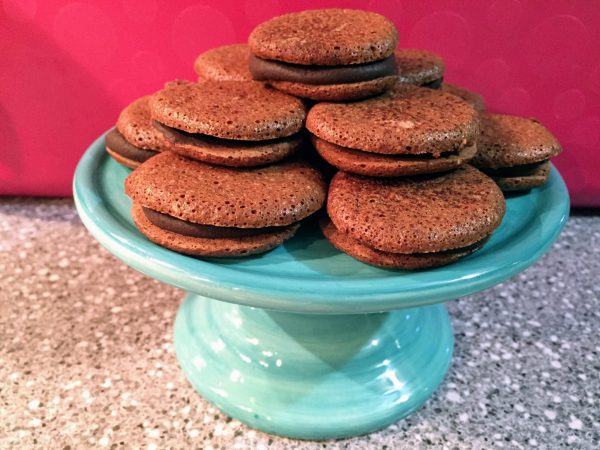
They definitely did NOT come out the way they were supposed to, but considering how far off script they looked, I was just happy they tasted good in the end.
So, all in all, this took me most of my Saturday, plus chilling overnight. I had to Google and research things that left me uninformed and equally vague. I had to run my dishwasher twice just to clean up all the dishes needed for everything I was being asked.
In the end, my recommendation is this — find an easier macaron recipe. This is for a master pastry chef, with skills, patience, and probably a staff. This was such a challenge — that I am glad I took — but I will stick to simpler macaron recipes in the future. I don’t know if my ego can take another round of baking failure like this!
Macaron Jardin dans les Nuages by Pierre Herme, from the book ‘Pierre Herme Macaron: The Ultimate Recipes from the Master Patissier’
Makes about 72 Macarons (144 Shells)
Chocolate Macaron Shells:
2 ½ oz Valrhona 100% cocoa paste
1 ½ C Confectioner’s Sugar
1 C plus 1 T Ground Almonds
4 Drops Liquid Carmine Red Food Color
3 ½ Large “Liquified” Egg Whites, Divided
3 T Still Mineral Water
¾ C Superfine Granulated Sugar
½ C Plus 1 ½ T Unsweetened Cocoa, Preferably Valrhona
Plain Macaron Shells:
1 ½ C Confectioner’s Sugar
1 C plus 1 T Ground Almonds
3 ½ Large “Liquified” Egg Whites, Divided
2 T Plus 1 ¾ Tsp Still Mineral Water
¾ C Superfine Granulated Sugar
Smoked-Salt Butter Ganache:
12 Oz Valrhona Manjari 64% Cacao Dark Chocolate
1 ⅓ C Light Whipping Cream
¼ C Plus 1 ½ T Smoked-salt Butter, preferably Bordier,
or fine French unsalted butter plus 1 Tsp fine smoked
sea salt, room temperature, cut into small pieces
For The Chocolate Macaron Shells:
The day before, chop the cocoa paste using a serrated
knife then melt it to between 113F and 122F set over a
bain-marie or in a microwave.
Sift together the confectioner’s sugar and almonds.
Combine the food color with half of the “liquefied”” egg whites. Pour this into the confectioner’s sugar-almond mixture without mixing.
Add the remaining liquefied egg whites to the bowl of a stand mixer fitted with the wire whisk. In a saucepan, boil the mineral water and granulated sugar to 244F. As soon as the syrup reaches 239F, begin beating the egg whites on high speed.
When the syrup reaches 244F, reduce the mixer speed to medium-high and pour the syrup in a steady stream down the inside edge of the bowl into the beaten egg whites. Beat the merengue until it cools to 122F. Fold about one-third of the merengue into the melted cocoa paste then add this mixture to the confectioner’s sugar-almond mixture along with the rest of the merengue. Fold it with a silicone spatula until the mixture loses volume. Transfer the batter to a pastry bag fitted with a plain #11, ½ inch pastry tip.
Line baking sheets with parchment paper. Pipe disks about 1 ½ inches in diameter and ¾ inch apart on the lined baking sheets. Rap the baking sheets on a work surface covered with a clean kitchen towel to gently smooth out the disks. Dust the disks with cocoa. Set aside for at least 30 minutes at room temperature to allow s skin to form.
Preheat oven to 350. Place the baking sheets in the oven. Bake for 12 minutes, quickly opening and closing the oven door twice during baking to release moisture. Remove the shells from the oven and slide them still on the parchment paper onto a work surface.
For The Plain Macaron Shells:
Sift together the confectioner’s sugar and almonds.
Pour half of the liquefied egg whites into the confectioner’s sugar-almond mixture without mixing.
Add the remaining liquefied egg whites to the bowl of a stand mixer fitted with the wire whisk. In a saucepan, boil the mineral water and granulated sugar to 244F. As soon as the syrup reaches 239F, begin beating the egg whites on high speed.
When the syrup reaches 244F, reduce the mixer speed to medium-high and pour the syrup in a steady stream down the inside edge of the bowl into the beaten egg whites. Beat the merengue until it cools to 122F. Fold it with a silicone spatula into the confectioner’s sugar-almond mixture the mixture lose volume. Transfer the batter to a pastry bag fitted with a plain #11, ½ inch pastry tip.
Line baking sheets with parchment paper. Pipe disks about 1 ½ inches in diameter and ¾ inch apart on the lined baking sheets. Rap the baking sheets on a work surface covered with a clean kitchen towel to gently smooth out the disks. Dust the disks with cocoa. Set aside for at least 30 minutes at room temperature to allow s skin to form.
Preheat oven to 350. Place the baking sheets in the oven. Bake for 12 minutes, quickly opening and closing the oven door twice during baking to release moisture. Remove the shells form the oven and slide them still on the parchment paper onto a work surface.
For the Smoked-Salt Butter Ganache:
Chop the chocolate using a serrated knife then place it
in a bowl.
In a saucepan, bring the cream to a boil. Pour the hot cream in thirds into the chocolate, stirring after each addition starting in the center then in increasingly wider concentric circles towards the sides of the bowl. Stir in the smoked sea salt, if using. When the ganache cools to 122F, stir in the butter a little at a time. Using an immersion blender, blend the ganache until smooth.
Pour the ganache into a baking dish. Cover it by gently pressing plastic wrap on its surface. Refrigerate for 3 hours, just until the ganache has developed a creamy consistency. Transfer the ganache to a pastry bag fitted with a plain #11, ½ inch pastry tip.
Turn the chocolate macaron shells over with the flat sides up onto a new piece of parchment paper. Fill them with the ganache. Close them with the plain macaron shells, pressing down lightly.
Refrigerate the macarons for 24 hours. Remove them from the refrigerator for 2 hours before eating them.


